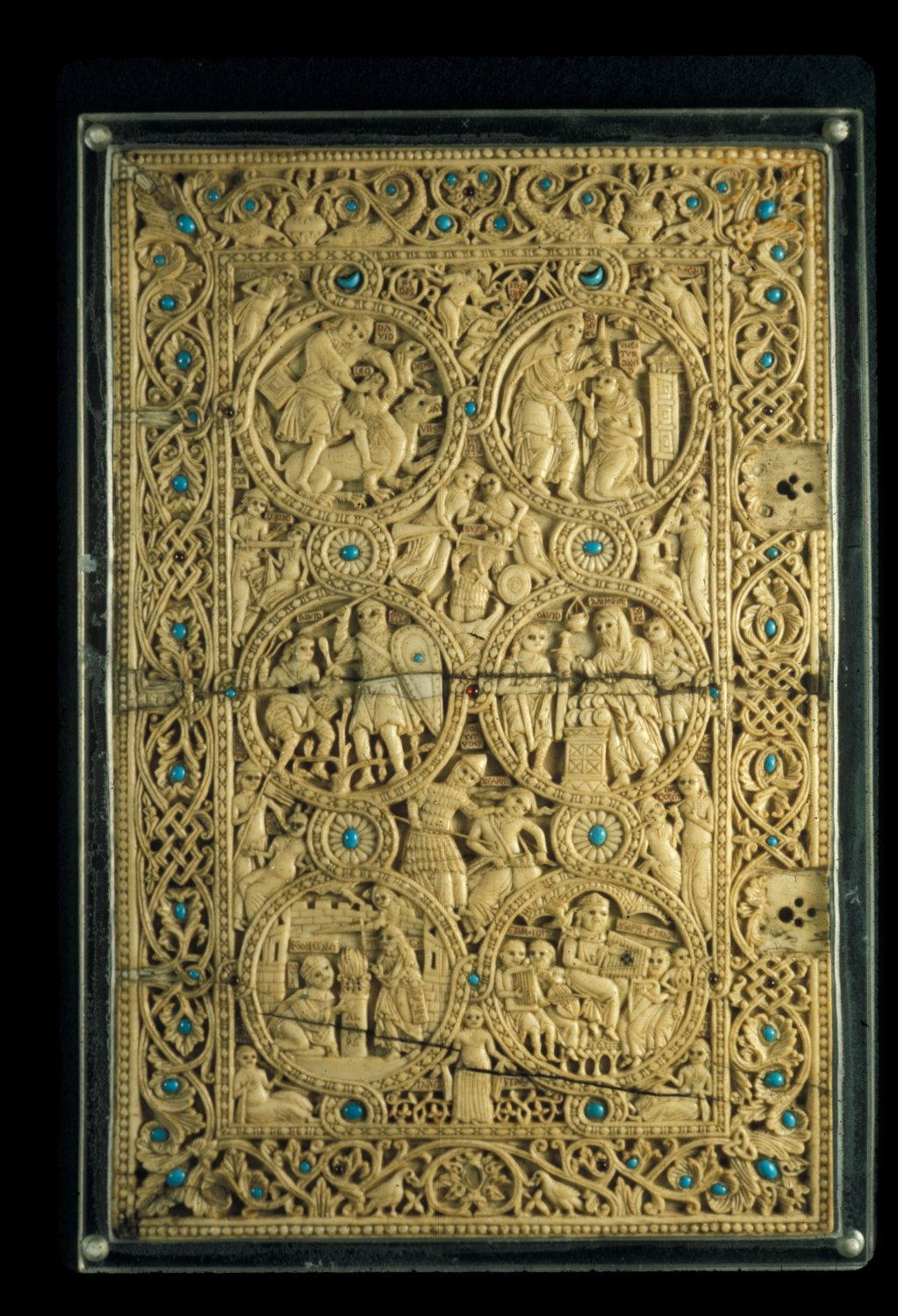
Join Amazon Prime - Watch Thousands of Movies & TV Shows Anytime - Start Free Trial Now
The 'Melisende Psalter'
Eastern Mediterranean (Jerusalem) between 1131 and 1143
Upper Cover

A larger black and white image of the Upper Cover of The 'Melisende Psalter', Jerusalem
A detail of David and Goliath on the Ivory Cover of the 'Melisende Psalter', Jerusalem, 1131-1143AD. British Library.
| In the roundels: | ||
| David kills a lion | David annointed by Samuel | |
| David fights Goliath | David receiving the show bread and Goliath’s sword from Abimelech (Doeg behind) | |
| Murder of the priests and women of Nob | David playing a harp with musicians Ethan, Iduthin, Asaph and Eman | |
